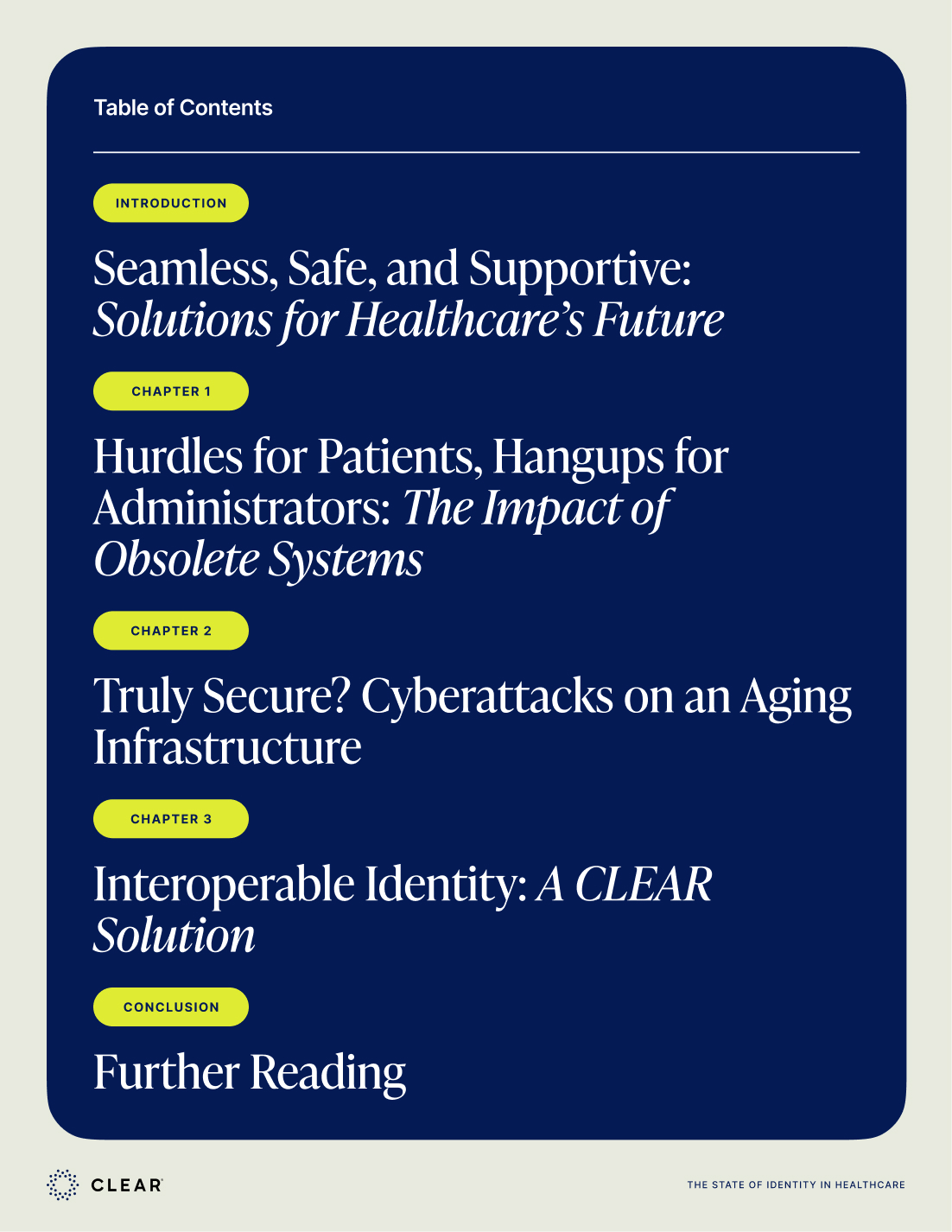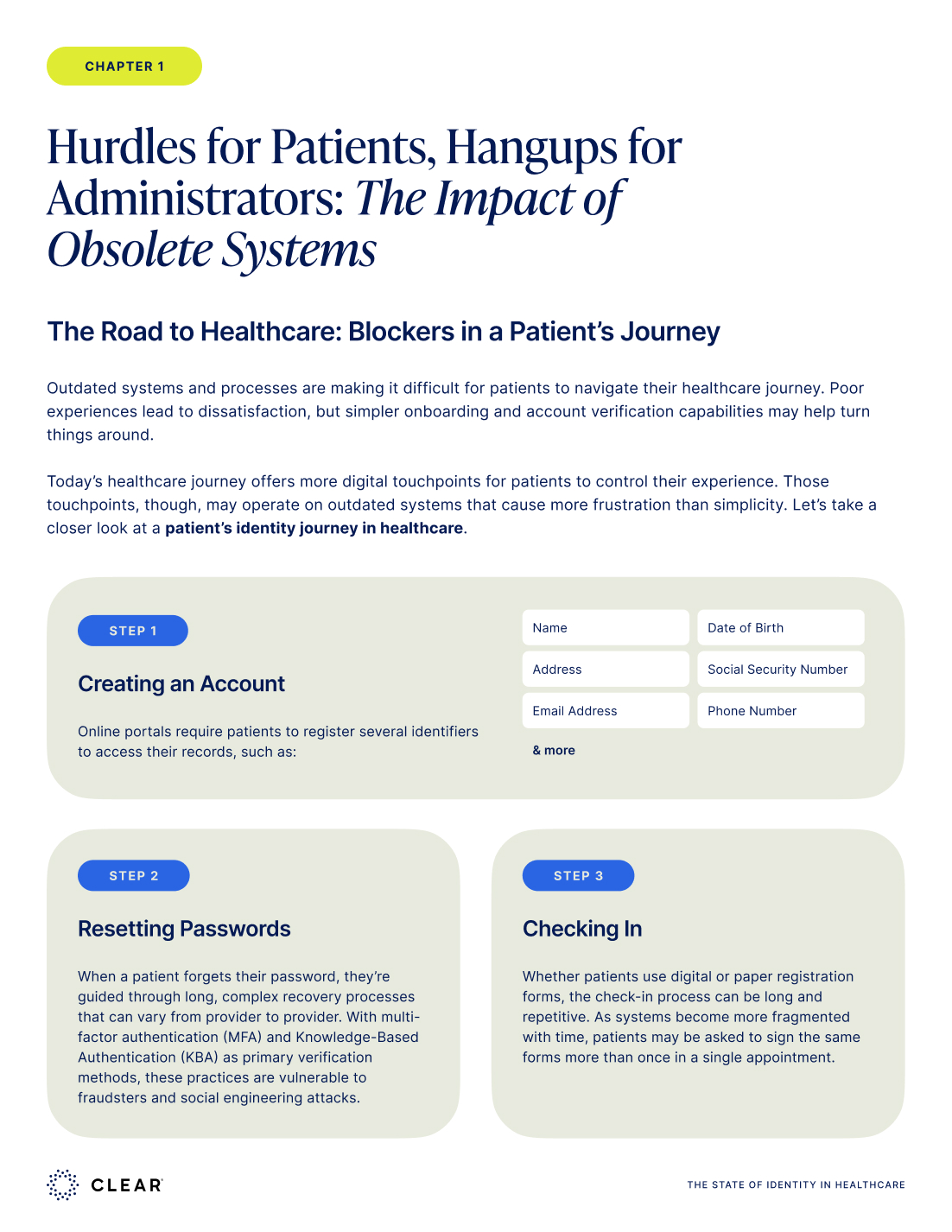


CIAM leaders face an escalating challenge: bot armies that create fake accounts at an unprecedented scale. Unfortunately, today’s threats go far beyond traditional garbage signups. Attackers now deploy generative AI to craft synthetic identities that convincingly mimic legitimate customers, often bypassing standard onboarding protocols entirely. Deloitte projects synthetic identity fraud will generate at least $23 billion in losses by 2030, fueled by AI-enabled account farms operating at a previously impossible scale.
Traditional CIAM security solutions weren’t built for this reality. When fraudsters can generate unlimited fake identities, complete with believable backstories, social media presence, and documentation designed to fool conventional checks, the fundamental question becomes clear: Is your identity system built for a world where anyone can be anyone?
The answer lies in enhancing existing CIAM platforms with adaptive identity assurance that verifies the human behind every device. Synthetic identities may look real, but they can’t replicate the multi-layered depth of actual people.
Understanding the Scale of Fake Account Creation
Preventing fake signups isn’t new—what’s changed is how real these fakes now look. Synthetic identity fraud creates fictitious identities by combining real and fabricated personal information, ultimately using these fake profiles to build seemingly legitimate histories over months or years. Unlike traditional identity theft that steals existing identities, today’s account farms manufacture entirely new ones.
This distinction matters because synthetic identities operate differently from stolen ones. When fraudsters can create unlimited fake identities that build credit histories and transaction patterns over time, traditional CIAM security faces a fundamental trust crisis. These systems inadvertently validate fake identities that gain legitimacy, making later detection nearly impossible. The result is alarming: Children under the age of 7 are the most likely victims of synthetic identity fraud, as their clean credit profiles provide ideal foundations for long-term fake account development.
How AI Supercharges This Threat
The advent of AI has fundamentally changed the scale, sophistication, and success rate of attacks on fake signup campaigns targeting CIAM security systems. Bot armies powered by generative AI now create fake profiles that look legitimate at first glance, passing the same onboarding checks that real customers complete.
- Synthetic document generation enables fraudsters to create fake identity documents that are virtually identical to genuine ones by using democratized AI forgery tools.
- AI-generated imagery provides accessible tools for creating hyper-realistic fake selfies and profile photos that exploit trust in visual verification. Generative Adversarial Networks (GANs) can produce hundreds of convincing synthetic images that pass traditional photo-based identity checks, making standard selfie verification alone unreliable.
- Automated scaling allows individual bad actors to execute account farm operations that once required full criminal teams, creating asymmetrical threats that can scale exponentially.
Thousands of data breaches compromising hundreds of millions of records last year provide the foundation, while AI provides the manufacturing capability. Global digital fraud losses reached over $47.8 billion this year, reflecting a 15% increase, with synthetic identity fraud alone surging 31%.
So, how do you get ahead of account farms that generate fake signups faster than traditional systems can detect them? By implementing CIAM security that verifies the human behind the device.
CIAM Security That Stops Fake Accounts at the Source
Modern CIAM security must verify the actual person behind every fake signup attempt through defense layers that synthetic identities cannot replicate. This represents an evolution from credential-based to identity-based security that addresses the root problem: distinguishing real people from manufactured personas.
Identity proofing confirms an individual's actual identity data, not just device possession. When fraudsters compromise devices through SIM swapping, malware, or theft, device-based authentication becomes worthless, confirming hardware while the criminal operating fake accounts remains invisible.
Advanced CIAM security capabilities that combat fake accounts include:
- Biometric verification with liveness detection that counters AI-generated fake selfies by confirming physical presence rather than synthetic or recorded images, stopping fake signups that rely on AI-generated profile photos.
- Real-time cross-referencing against multiple trusted databases creates verification webs that synthetic identities struggle to replicate, catching fake accounts that might fool individual checks.
- Continuous authentication validates user legitimacy throughout the journey, not just during initial signup, identifying fake accounts that reveal inconsistent behavior patterns over time.
This strategy recognizes that the future of CIAM security lies not in replacing existing systems, but in enhancing them with robust identity assurance layers that can detect fake signups while maintaining the user experience legitimate customers expect.
The CLEAR1 Approach: Stopping Account Farms Before They Scale
Organizations are layering CLEAR1 onto existing CIAM infrastructure because CLEAR1 enhances rather than replaces platforms by providing the human-centric verification that traditional CIAM solutions lack when facing fake signup campaigns. CLEAR1 addresses fake signup campaigns through comprehensive identity assurance—a protective layer that enhances CIAM systems without disrupting existing workflows.
- Multi-layered defense operates across several dimensions to catch fake accounts that single-point systems miss.
- Real-time selfie matching with government IDs, enhanced by liveness detection that stops AI-generated fake photos.
- Hundreds of signals detect anomalies invisible to traditional checks, identifying patterns that reveal synthetic identity creation.
- Network advantage leverages 36mm+ verified users for instant verification of legitimate customers while flagging suspicious account creation patterns.
- Seamless integration maintains the existing CIAM user experience while adding security layers that identify fake signups in real time.
This approach delivers measurable results in real-world deployments, transforming customer identification programs into competitive advantages that stop fraud without stopping growth.
Future-Proof Your CIAM Infrastructure
Fake accounts generated by AI have less depth than real people, but detecting these differences requires adaptive systems that evolve with emerging threats. The challenge isn’t just identifying current fake signup methods—it’s building CIAM infrastructure that adapts to account farm techniques that don’t exist yet.
The solution lies in enhancing your existing CIAM infrastructure with adaptive verification capabilities that combine biometric verification with other identity signals, and cross-references those across trusted databases. When solutions like CLEAR1 integrate seamlessly with CIAM workflows, organizations can respond to new fake account tactics in real-time, rather than after the damage occurs.
With synthetic fraud growing 60% year-over-year, can your CIAM infrastructure distinguish between real customers and AI-generated fake accounts?
Discover how CLEAR1's identity-first approach provides the multi-layered defense your business needs against evolving account farm operations.
CIAM leaders face an escalating challenge: bot armies that create fake accounts at an unprecedented scale. Unfortunately, today’s threats go far beyond traditional garbage signups. Attackers now deploy generative AI to craft synthetic identities that convincingly mimic legitimate customers, often bypassing standard onboarding protocols entirely. Deloitte projects synthetic identity fraud will generate at least $23 billion in losses by 2030, fueled by AI-enabled account farms operating at a previously impossible scale.
Traditional CIAM security solutions weren’t built for this reality. When fraudsters can generate unlimited fake identities, complete with believable backstories, social media presence, and documentation designed to fool conventional checks, the fundamental question becomes clear: Is your identity system built for a world where anyone can be anyone?
The answer lies in enhancing existing CIAM platforms with adaptive identity assurance that verifies the human behind every device. Synthetic identities may look real, but they can’t replicate the multi-layered depth of actual people.
Understanding the Scale of Fake Account Creation
Preventing fake signups isn’t new—what’s changed is how real these fakes now look. Synthetic identity fraud creates fictitious identities by combining real and fabricated personal information, ultimately using these fake profiles to build seemingly legitimate histories over months or years. Unlike traditional identity theft that steals existing identities, today’s account farms manufacture entirely new ones.
This distinction matters because synthetic identities operate differently from stolen ones. When fraudsters can create unlimited fake identities that build credit histories and transaction patterns over time, traditional CIAM security faces a fundamental trust crisis. These systems inadvertently validate fake identities that gain legitimacy, making later detection nearly impossible. The result is alarming: Children under the age of 7 are the most likely victims of synthetic identity fraud, as their clean credit profiles provide ideal foundations for long-term fake account development.
How AI Supercharges This Threat
The advent of AI has fundamentally changed the scale, sophistication, and success rate of attacks on fake signup campaigns targeting CIAM security systems. Bot armies powered by generative AI now create fake profiles that look legitimate at first glance, passing the same onboarding checks that real customers complete.
- Synthetic document generation enables fraudsters to create fake identity documents that are virtually identical to genuine ones by using democratized AI forgery tools.
- AI-generated imagery provides accessible tools for creating hyper-realistic fake selfies and profile photos that exploit trust in visual verification. Generative Adversarial Networks (GANs) can produce hundreds of convincing synthetic images that pass traditional photo-based identity checks, making standard selfie verification alone unreliable.
- Automated scaling allows individual bad actors to execute account farm operations that once required full criminal teams, creating asymmetrical threats that can scale exponentially.
Thousands of data breaches compromising hundreds of millions of records last year provide the foundation, while AI provides the manufacturing capability. Global digital fraud losses reached over $47.8 billion this year, reflecting a 15% increase, with synthetic identity fraud alone surging 31%.
So, how do you get ahead of account farms that generate fake signups faster than traditional systems can detect them? By implementing CIAM security that verifies the human behind the device.
CIAM Security That Stops Fake Accounts at the Source
Modern CIAM security must verify the actual person behind every fake signup attempt through defense layers that synthetic identities cannot replicate. This represents an evolution from credential-based to identity-based security that addresses the root problem: distinguishing real people from manufactured personas.
Identity proofing confirms an individual's actual identity data, not just device possession. When fraudsters compromise devices through SIM swapping, malware, or theft, device-based authentication becomes worthless, confirming hardware while the criminal operating fake accounts remains invisible.
Advanced CIAM security capabilities that combat fake accounts include:
- Biometric verification with liveness detection that counters AI-generated fake selfies by confirming physical presence rather than synthetic or recorded images, stopping fake signups that rely on AI-generated profile photos.
- Real-time cross-referencing against multiple trusted databases creates verification webs that synthetic identities struggle to replicate, catching fake accounts that might fool individual checks.
- Continuous authentication validates user legitimacy throughout the journey, not just during initial signup, identifying fake accounts that reveal inconsistent behavior patterns over time.
This strategy recognizes that the future of CIAM security lies not in replacing existing systems, but in enhancing them with robust identity assurance layers that can detect fake signups while maintaining the user experience legitimate customers expect.
The CLEAR1 Approach: Stopping Account Farms Before They Scale
Organizations are layering CLEAR1 onto existing CIAM infrastructure because CLEAR1 enhances rather than replaces platforms by providing the human-centric verification that traditional CIAM solutions lack when facing fake signup campaigns. CLEAR1 addresses fake signup campaigns through comprehensive identity assurance—a protective layer that enhances CIAM systems without disrupting existing workflows.
- Multi-layered defense operates across several dimensions to catch fake accounts that single-point systems miss.
- Real-time selfie matching with government IDs, enhanced by liveness detection that stops AI-generated fake photos.
- Hundreds of signals detect anomalies invisible to traditional checks, identifying patterns that reveal synthetic identity creation.
- Network advantage leverages 36mm+ verified users for instant verification of legitimate customers while flagging suspicious account creation patterns.
- Seamless integration maintains the existing CIAM user experience while adding security layers that identify fake signups in real time.
This approach delivers measurable results in real-world deployments, transforming customer identification programs into competitive advantages that stop fraud without stopping growth.
Future-Proof Your CIAM Infrastructure
Fake accounts generated by AI have less depth than real people, but detecting these differences requires adaptive systems that evolve with emerging threats. The challenge isn’t just identifying current fake signup methods—it’s building CIAM infrastructure that adapts to account farm techniques that don’t exist yet.
The solution lies in enhancing your existing CIAM infrastructure with adaptive verification capabilities that combine biometric verification with other identity signals, and cross-references those across trusted databases. When solutions like CLEAR1 integrate seamlessly with CIAM workflows, organizations can respond to new fake account tactics in real-time, rather than after the damage occurs.
With synthetic fraud growing 60% year-over-year, can your CIAM infrastructure distinguish between real customers and AI-generated fake accounts?
Discover how CLEAR1's identity-first approach provides the multi-layered defense your business needs against evolving account farm operations.























